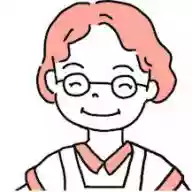[For Seniors] A Collection of Recommended Spring Songs for People in Their 80s
For those in their 80s looking for songs perfect for spring.
In this article, we’ll introduce recommended songs that are just right for the season.
From the postwar era, we’ve gathered mainly cheerful tunes that lift your spirits.
Some of you may remember hearing them on the radio.
When singing in a group at a senior facility, adding handclaps helps create a sense of unity.
Also, the shoka (school songs) composed in the Meiji and Taisho periods feature beautifully expressive lyrics that vividly evoke springtime scenes.
By all means, try singing them while recalling the landscapes of your hometown.
- [For Seniors] Recommended Spring Songs for People in Their 70s: A Collection of Nostalgic Spring Tunes
- Lively songs recommended for people in their 80s: A collection of nostalgic enka and kayōkyoku
- [For Seniors] Recommended spring songs for people in their 90s: A collection of Shōwa-era spring tunes
- Recommended youth songs for people in their 80s: A collection of nostalgic classics
- For seniors: Recommended youthful songs for people in their 90s. A collection of classic Showa-era hits.
- [Recommended for people in their 70s] Songs that really move you. Beloved classic Japanese hits of the past.
- A collection of cheerful, uplifting songs recommended for women in their 80s—fun, bright tunes to sing along to
- Energizing songs recommended for men in their 80s: A collection of nostalgic tracks that give you strength
- [For Seniors] Heartwarming Winter Classics: A Cozy Moment with Nostalgic Kayōkyoku and Traditional Songs
- Recommended winter songs for people in their 90s: A collection of Showa-era winter tracks
- Lively songs recommended for people in their 90s—fun songs for everyone to listen to and sing together.
- Great songs recommended for people in their 80s: a collection of tracks with lyrics that touch the heart
- [For Seniors in Their 80s] Recommended Summer Songs: From Enka and School Songs to Folk Songs
[For Seniors] Recommended Spring Songs for People in Their 80s (31–40)
Flowersong

Among the masterpieces that represent the Meiji era is a celebrated song depicting the beautiful spring scenery of the Sumida River: brilliant cherry blossoms along the long embankment, boatmen rowing their oars, and green willows and a hazy moon glowing at dusk.
It is a school song that gracefully expresses the changing seasons of Japan.
Composed by Rentaro Taki with lyrics by Hago Takajima, the piece was included on the album “Shiki” (Four Seasons), released in November 1900.
It was selected in 2006 for the Agency for Cultural Affairs’ “100 Best Japanese Songs,” and in April 1962 The Peanuts performed it on the program “Minna no Uta.” Its melody, resonant with nostalgia, is familiar and accessible to older listeners as well, and is a perfect choice for a leisurely spring afternoon.
Temptation of the Spring BreezeKyoko Koizumi

Under a sky where northern snow clouds drift by, a fresh melody echoes in the heart, hinting at the start of a new season.
Released by Kyoko Koizumi in February 1983, this masterpiece gracefully portrays the pure feelings of a girl eagerly awaiting love.
From atop a rooftop shimmering with heat haze, it delicately depicts the protagonist’s faint stirrings of love and her sense of anticipation as she watches spring’s arrival.
Also included on the album “Breezing,” the song became her first to break into the Oricon top 10.
While the girl sips tea by the window and watches people passing by, Mitsuo Hagita’s arrangement gently enfolds her emotions.
It’s a song best enjoyed on a calm spring day, while basking in nostalgia.
A hill with a view of the harborAiko Hirano

A postwar masterpiece that gently sings of a beautiful port town.
With its wistful melody and emotionally rich lyrics, Aiko Hirano superbly conveys the stirrings of love and the ache of parting.
On a hill overlooking the harbor, as cherry blossoms fall, the delicate feelings of someone thinking of a departing lover are vividly depicted, giving the song a universal appeal that anyone can relate to.
Since its release in April 1947, it became Victor’s first hit of the postwar era, selling a total of 450,000 copies.
Many artists, including Naomi Chiaki, Mina Aoe, and Hibari Misora, have covered it.
It’s a perfect song for the season when spring is in the air, offering a heartwarming moment filled with nostalgia.
It is a wonderful piece for seniors to share a calm, reminiscence-filled time together.
Spring has come.Monbushō Shōka (Ministry of Education Songs)

Set to the gentle melody of a Ministry of Education song, this piece depicts the calm arrival of spring.
The scene of spring returning to the mountains, villages, and fields spreads through a warm, tender vocal line.
Its tranquil tune vividly conveys the imagery of spring among Japan’s four seasons, imbued with a love for nature and the changing times of year.
Included in 1910 for the third grade of the “Elementary School Songs,” it was created by the renowned duo Tatsuyuki Takano and Teiichi Okano.
Featured in many music textbooks and song collections, it has often been performed at entrance ceremonies and spring events.
This work soothes the heart, making it a piece to enjoy slowly by a window in the warm sunlight.
It is a wonderful song for sharing the joy of spring’s arrival together with older adults.
Spring StreamMonbushō Shōka (Ministry of Education Songs)

Accompanied by the gentle murmur of water, this classic song unfolds a simple, tender scene before your eyes.
Among the Ministry of Education’s school songs, its melodic line is especially beautiful, and it is said that Tatsuyuki Takano wrote the lyrics infused with memories of his home in Nagano Prefecture.
The delicate flowers blooming along the shore and the fish swimming in the brook are depicted as if in a painting, superbly expressing the quintessential spring landscape of Japan.
Since its inclusion in 1912 in “Elementary School Songs for the Fourth Grade,” it has been sung across generations.
It is a recommended piece for those who wish to spend a heartwarming moment—both as a song of memories and as a tune that evokes the nostalgic scenery of spring.
[For seniors] A roundup of recommended spring songs for people in their 80s (41–50)
tea pickingMonbushō Shōka (Ministry of Education Songs)

We present a piece that beautifully portrays the charm of Japan’s four seasons.
This classic song richly depicts the tea-picking scene from Hachijūhachi-ya into early summer.
As the tranquil weather continues, you can picture people wearing vermilion sashes and sedge hats, diligently picking tea to the warmth of heartfelt singing.
Included in 1912 in “Elementary School Songs for the Third Grade,” it conveys the lifestyle of the time and the changing seasons to the present day.
Please listen with a relaxed mind as you recall nostalgic landscapes.
It may also spark fond memories and lively conversations with family and friends.
koinobori (carp streamers)Monbushō Shōka (Ministry of Education Songs)

Beloved as a Ministry of Education shoka (school song), this piece gracefully expresses both the grandeur of the carp streamers displayed for the Boys’ Festival (Tango no Sekku) and the wish for children’s happy growth.
Included in the 1913 publication “Jinjō Shōgaku Shōka, Grade Five,” the song, set in F major, harmonizes a powerful melody with a refined sense of the season.
It continues to be cherished and sung by contemporary musicians, including arrangements by Kiyoe Yoshioka.
Its cheerful atmosphere and warm, seasonable tone make it perfect for older adults who want to enjoy a pleasant springtime moment.
It can also be a cue to hum along with grandchildren or to fondly recall days gone by.






